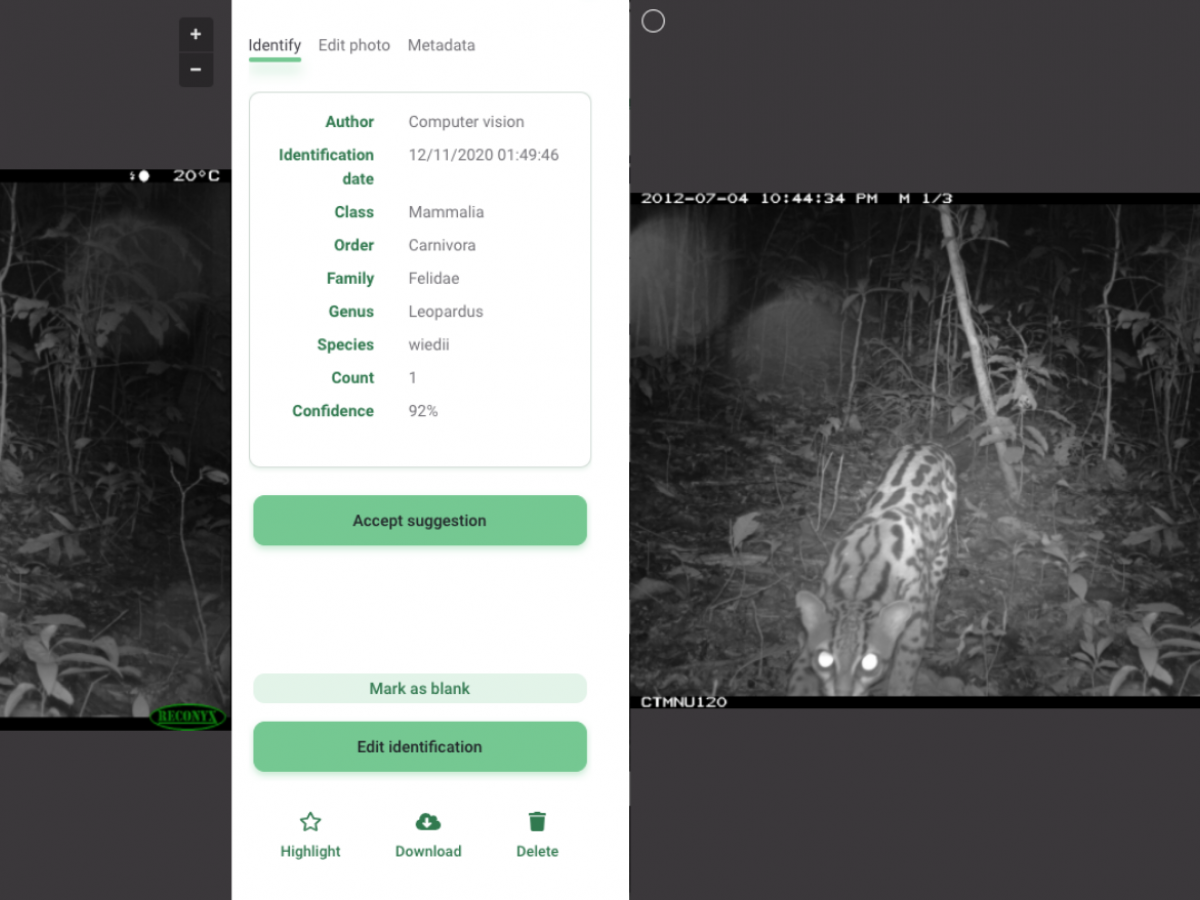Today, we’re announcing new features and enhancements to our Wildlife Insights AI model that we’re very excited to share. We hope that these features will save you time and make your camera trap data a little more manageable.
Here’s what’s new.
-
New model architecture
-
We’re using a new model architecture that outperforms Inception v4 for fine-grained visual classification tasks. It’s called EfficientNet, and we’ve migrated to this new backbone. Learn more about EfficientNet.
-
What you’ll notice: With this change, model accuracy increased 2% across the board.
-
-
Taxonomic level rollup
-
Wildlife Insights displays “No CV Results” when the model confidence is less than 65% for species and 95% for blanks (images without animals). If the model is not predicting a class with over 65% confidence at the species level, it will now show the next level up in the taxonomy where there is a sum of over 65% confidence.
-
What you’ll notice: Fewer “No CV Results,” and when you are reviewing images in the Identify page, you’ll see predictions at other taxonomic levels up to Class. We’ve decreased the amount of time you see “No CV result by up to 40% with this update. We still encourage you to edit the identification if you’re able to identify the image to a lower taxonomic rank, so the model continues to learn on your species of interest.
-
-
Holdout Set
-
We have built a normalized holdout set, consisting of 350,000 images across the Wildlife Insights training dataset where there are over 100 images per species and there are 5 or more camera traps containing that species. We carefully select the camera traps for holdout in order to optimize the tradeoff between withholding enough images for training but providing enough data for robust performance measurement.
-
Why this is important: As our model evolves, we’ll have a standardized set of data, called a Holdout Set, that we can test against to accurately measure how our model has improved over time in classification tasks. As we add more data to retrain the model, we’ll continue to grow the Holdout Set so we can measure performance changes with each new addition of data or model retraining.
-
-
Geofilter
-
We released a solution for when the model predicted a species that doesn’t occur in that country.
-
What you’ll notice: The AI model won’t suggest an identification for “African elephant” if your project location is in Asia and you upload an elephant picture, for example. Now, we’re reducing on average at least 15% of the model’s errors.
-
-
Larger corpus of training data
-
Our training data now encompasses 732 species (+4 non-animal classes and 105 higher taxonomic classes) across 11.6M images, up from 565 species (614 total classes) on 8.7M images. Please check the species table to search if your species was one of the ones added. We are planning on more frequent model updates with new data in the future.
-
We have more information in our About our AI section of our website, if you’d like to learn more or would like to see how the changes affect your species of interest.

